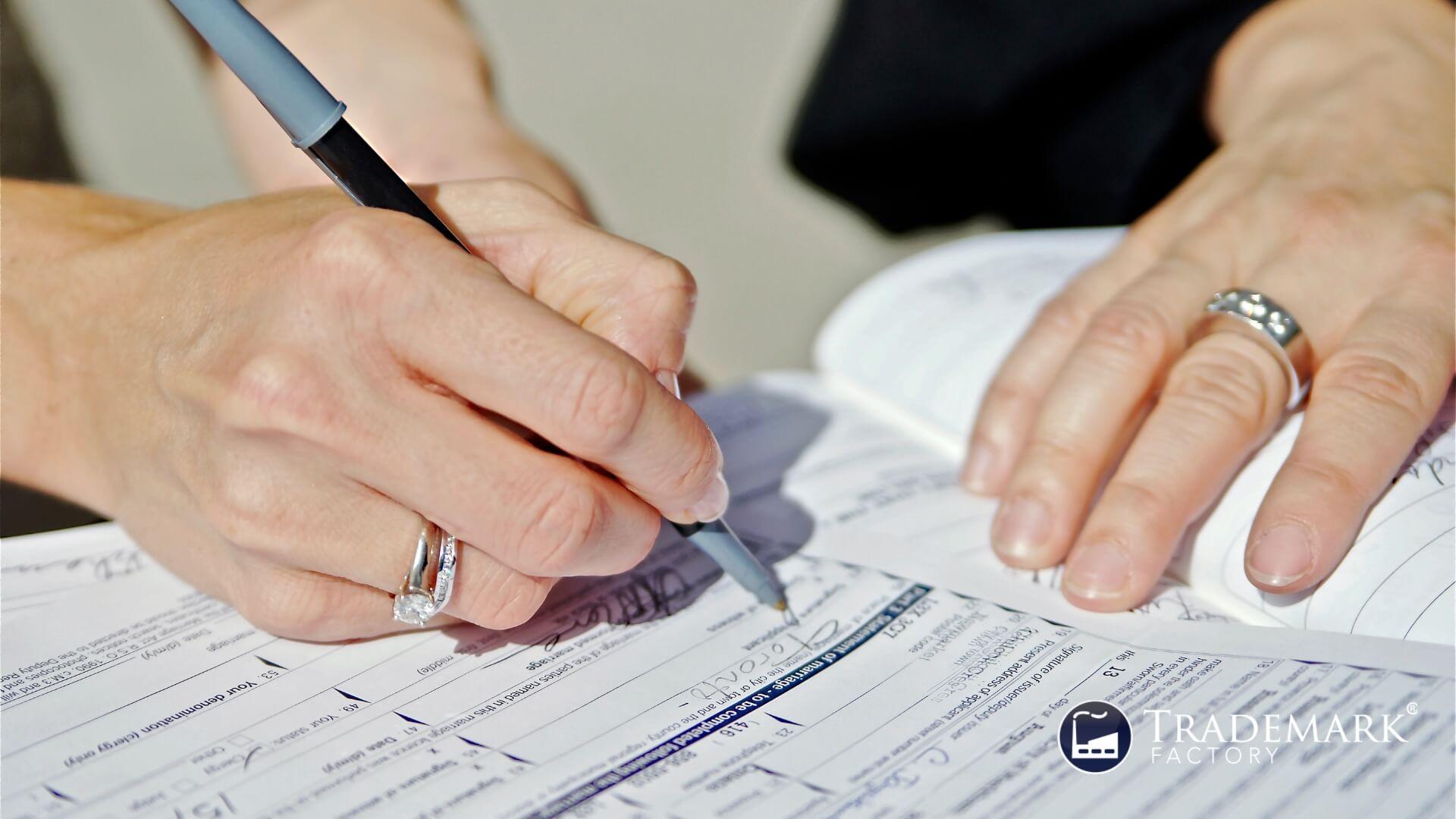Making Trademark Application Amendments A Guide

The process of applying for a trademark is often complex and demands rigorous attention to detail. Sometimes, due to unforeseen circumstances or errors in the initial application, amendments become necessary. This article serves as an essential guide to making such amendments in filing trademark applications effectively and efficiently. It provides comprehensive insights into understanding the amendment process including its timing and steps involved, offering clarity on associated costs and impact. It further elucidates how to avoid common mistakes during this procedure and highlights the implications of withdrawing them if need be. Moreover, it underscores the significance of accuracy throughout this process and its consequential effect on achieving successful registration. The content hereafter is designed for those seeking a sense of belonging within their respective industries by securing their unique brand identity through trademark application methods, thereby enhancing their market presence significantly.
Comprehending Trademark Application Amendments

Understanding the intricacies of trademark application amendments is a critical aspect for any entity seeking to secure its brand identity. This discourse will elucidate on the diverse categorizations of alterations which can be incorporated into a trademark application, ranging from minor rectifications to significant modifications that could potentially impact the core aspects of the trademark. Furthermore, it will delve into various scenarios necessitating such amendments, thereby providing insights into strategic adjustments that may enhance the efficacy and protectability of a trademark application.
Types of amendments that can be made to a trademark application
In a trademark application, several types of amendments can be made that range from minor to major changes depending on the specific needs and circumstances of the applicant. Notwithstanding Amendment Restrictions and Amendment Legality, alterations are possible pre or post registration. However, International Trademark Amendments may invite scrutiny and potential Trademark Rejection. Understanding these variances is crucial before contemplating reasons why an applicant may need to amend their trademark application.
Reasons why an applicant may need to amend their trademark application
Potential reasons for an alteration in a registered brand symbol may stem from strategic business changes, legal considerations, or evolving market dynamics. Circumstances which may necessitate amendments include:
- Anticipating Trademark Rejections
- Navigating Legal Implications
- Addressing Amendment Limitations
Understanding these factors can mitigate potential Trademark Litigations and assist in managing Post Registration Amendments. The forthcoming section delves into the timing and procedures involved in making such alterations.
The Amendment Process: Steps and Timing

Understanding the amendment process in a trademark application necessitates a comprehensive grasp of how to request an amendment to trademark application and the timeframe for trademark application amendments within which such modifications should be made. The procedural steps involved in amending an application are critical to ensuring that changes are accurately reflected and legally binding. Furthermore, awareness of the time parameters for amendments, pivotal to avoiding any potential legal ramifications or delays in approval, underscores the importance of strategic planning and prompt action.
How to request an amendment to a trademark application
To request an amendment to a trademark application, applicants must follow a prescribed process that includes submitting specific forms and supporting documentation. This often involves:
- Understanding potential 'Amendment Rejections'
- Preparing for possible 'Trademark Litigation'
- Considering 'International Trademark Amendments'
- Seeking 'Professional Assistance'
- Accepting the possibility of 'Amendment Refusal'
In navigating these complexities, one should also be aware of the timeframe for making amendments to a trademark application.
Timeframe for making amendments to a trademark application
Navigating the intricacies of modifying an existing claim to intellectual property rights often entails a keen comprehension of the allotted timeframe. Understanding amendment deadlines and potential rejection consequences is essential for mitigating legal implications and overcoming amendment challenges. Seeking professional assistance can ensure accuracy and timeliness in this process. The subsequent section will provide insights into understanding the costs and impact of these amendments on your trademark application.
Understanding the Costs and Impact of Amendments

Understanding the costs of trademark application amendment and potential impact of amendments to trademark applications necessitates a comprehensive examination. The filing of these alterations incurs specific fees, which are essential for applicants to consider in their budgeting process. Moreover, it is critical to understand how these amendments may influence the overall application process, as such changes can affect timelines and potentially alter the outcome of the application.
Fees associated with filing a trademark application amendment
Filing a trademark application amendment often involves incurring certain fees, the magnitude of which can vary depending on several factors. These include the necessity of the amendment, prevailing trademark laws, potential for trademark infringement, need for professional assistance and likelihood of future trademark disputes. Knowledgeable consideration of these elements is crucial to avoiding unnecessary expenditures. This understanding also prepares applicants for the subsequent phase: assessing the impact of amendments on the trademark application process.
Impact of amendments on the trademark application process
Assessing the potential repercussions of modifications on the trademark registration procedure is a critical step in ensuring a smooth and successful process. Amendment implications range from timeline extensions to trademark rejections, resulting in legal consequences. It's vital to navigate amendment controversies and post-registration amendments with precision. Understanding this paves the way for strategies that mitigate risks associated with avoidable errors, paving the path towards effective withdrawal of amendments if necessary.
Avoiding Errors and Withdrawing Amendments

Navigating the process of amending a trademark application can be fraught with potential missteps, thus careful attention is requisite to avoid common errors. These may include, but are not limited to, inaccurately identifying the mark or failing to meet statutory requirements which could potentially lead to an unsuccessful amendment and consequential loss of filing date priority. Furthermore, understanding the procedure for withdrawing amendments - such as knowing when it's feasible or beneficial to do so and being aware of any implications - is crucial in managing one's trademark portfolio effectively.
Common mistakes to avoid when making amendments to a trademark application
Overlooking essential details during the amendment process of a trademark application can lead to detrimental ramifications, thus necessitating a thorough understanding of common pitfalls.
- Amendment Repercussions: The potential for damaging consequences.
- Unintentional Violations: Risk of unknowingly breaking rules.
- Trademark Rejection: Possibility of application denial.
- Legal Consultation and Trademark Protection: Necessity for professional guidance.
Proceeding meticulously helps minimize errors. The following discussion delves into measures for withdrawing an amendment should the need arise.
How to withdraw an amendment to a trademark application
Understanding the process for retracting modifications to a brand's registered symbol can be crucial in certain situations. This involves understanding Amendment Cancellation, Legal Implications, and handling Amendment Rejections. Trademark Reapplication may become necessary post withdrawal, while Dispute Resolution mechanisms might aid in easing contention. The subsequent focus will delve into the effects on registration and underscore the necessity of precision in this intricate legal domain.
Impact on Registration and Importance of Accuracy

The impact of amendments on the trademark registration process is a significant aspect that necessitates meticulous consideration. It is paramount to understand how these modifications can potentially affect the trajectory of the registration, leading to varying outcomes. Equally critical is the emphasis on accuracy and completeness in making such amendments, underscoring the need for thoroughness and precision in every aspect of a trademark application to minimize the risk of errors or omissions that could jeopardize its validity or enforceability.
Effect of amendments on the trademark registration process
Modifying a trademark application through amendments can significantly impact the outcome and timeline of the registration process, warranting careful consideration.
- Amendment repercussions may alter results.
- Registration delays could extend timelines.
- Amendment rejections might complicate procedures.
- Trademark disputes can arise due to inaccuracies.
The legal implications underscore the necessity for accuracy when amending applications. To understand this better, let's delve into the importance of accuracy and completeness when making these changes.
Importance of accuracy and completeness when making amendments to a trademark application
Transitioning from how amendments affect the trademark registration process, it's imperative to delve into the significance of accuracy in trademark application amendments and completeness when amending a trademark application. This importance can be encapsulated by discussing amendment implications, verification necessity, and the potential pitfalls and benefits of amendments.
Amendment Implications
Verification Necessity
Accuracy Significance
Ensures proper validity
Confirms correctness
Minimizes errors
Reduces rejection risks
Prevents future disputes
Enhances approval chances
Improves legal standing
Solidifies authenticity
Strengthens reliability
Promotes accurate representation
Fosters trust in process
Boosts confidence in outcome
Mitigates potential conflicts
Supports due diligence efforts
Encourages thorough review
Therefore, meticulousness is key for successful applications.
Frequently Asked Questions

What is the role of a trademark attorney in the amendment process?
A trademark attorney's role in the amendment process involves leveraging their expertise to navigate amendment challenges, undertaking responsibilities such as strategizing and providing legal guidance to ensure a successful trademark application modification.
Can a trademark amendment be made once the trademark is already registered?
Yes, amendments can be made to registered trademarks. However, amendment limitations exist regarding significant changes. The amendment process requires adherence to specific timeframes and may incur additional costs depending on the amendment requirements.
How does an amendment affect the trademark's original filing date?
Amendment implications often result in a filing date adjustment, altering the original record. However, amendment limitations restrict significant changes to preserve the initial date, crucial for trademark renewal processes.
What are the potential legal consequences of failing to correctly amend a trademark application?
Failure to correctly amend a trademark application can lead to significant legal consequences, including application rejection, increased infringement risks, financial penalties, possible legal disputes and potential loss of protection for the trademark.
Can I change the entire design or logo during the amendment process?
Design modification or logo alteration during the amendment process is limited. Maintaining branding consistency is crucial, and extreme changes may incur additional amendment costs due to examination requirements.
Conclusion

In conclusion, the importance of precision and accuracy in trademark application amendments cannot be overstated. Errors can lead to complications, unnecessary costs, or even withdrawal of amendments. Understanding the amendment process and its implications is crucial for a successful trademark registration. Therefore, ensuring adherence to procedural rules and timelines is imperative for potential trademark applicants, enabling them to navigate this complex legal landscape with confidence and competence.
Subscribe to Trademark Wednesdays, our weekly newsletter where we'll send fun and informative trademarking topics straight to your inbox.




